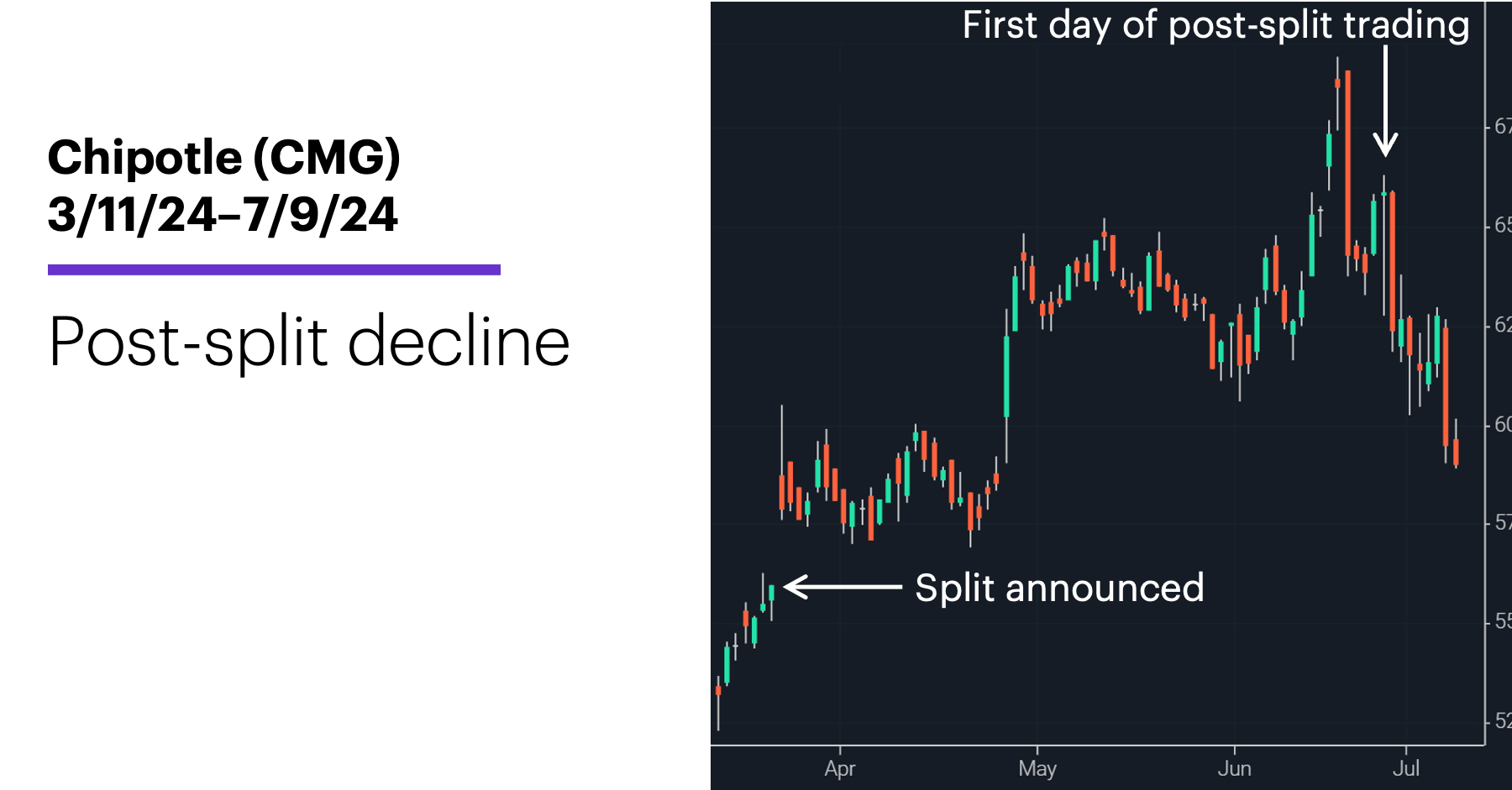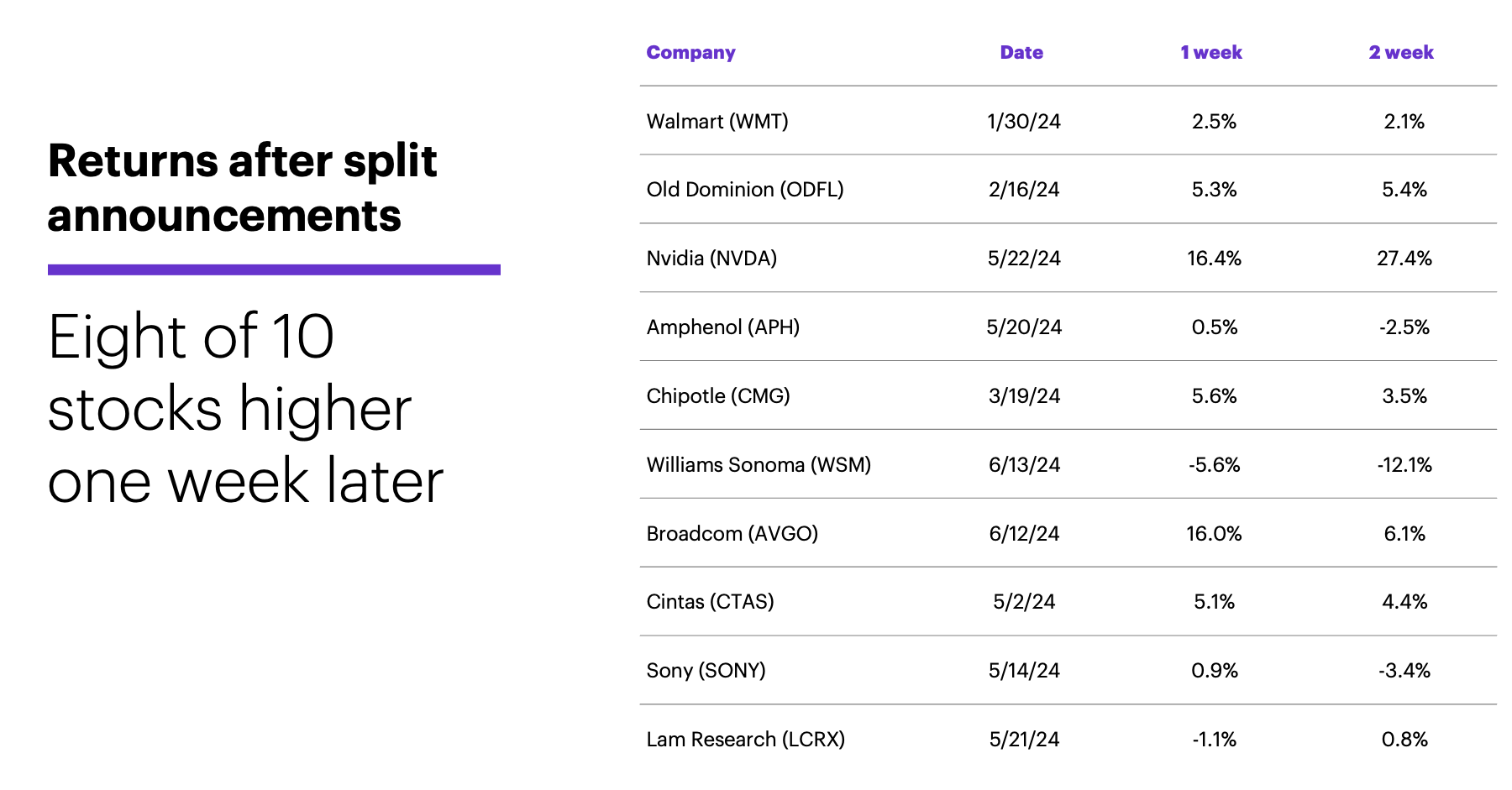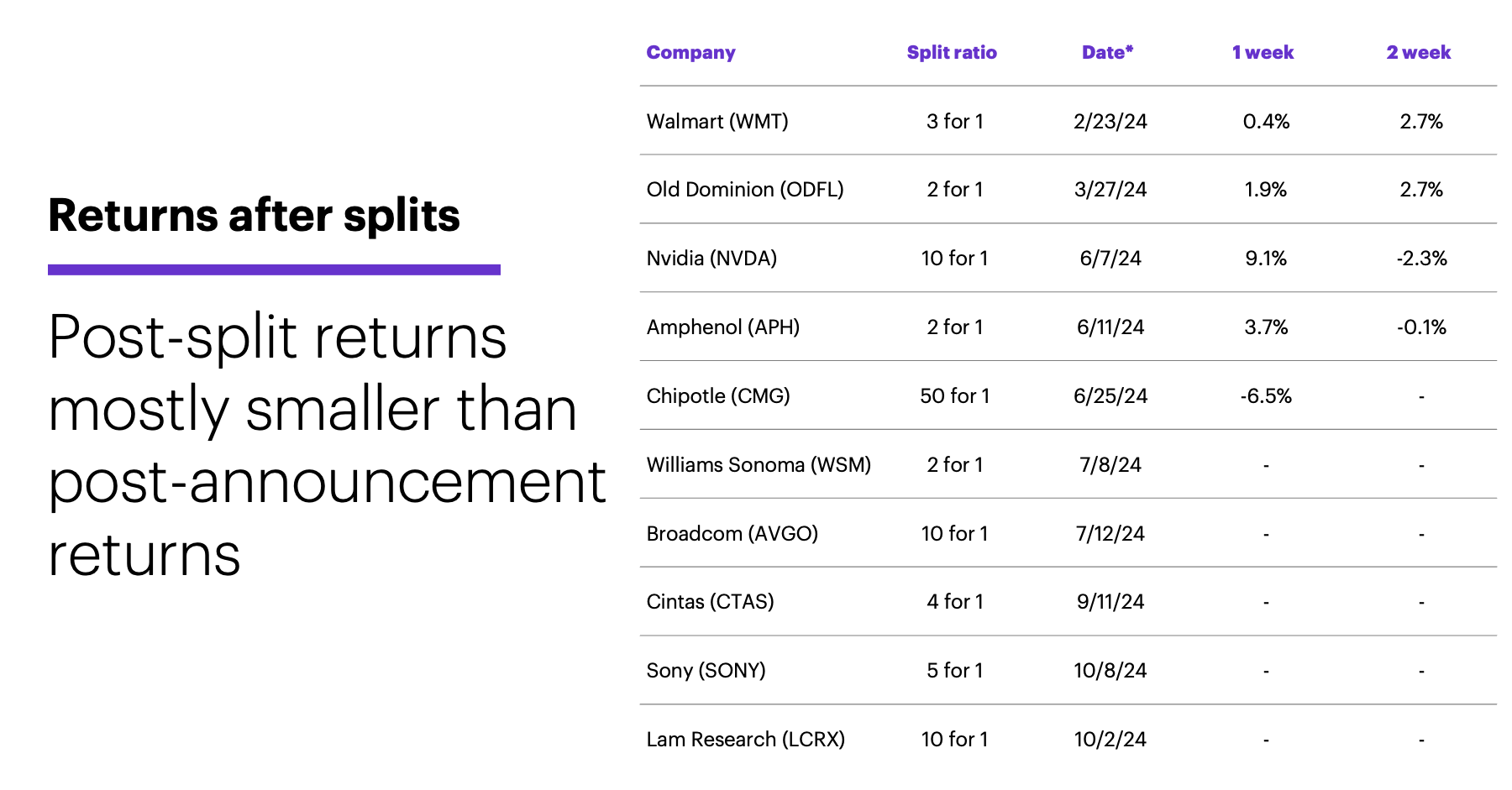Stock splits in the spotlight
- 2024 has featured several high-profile stock splits
- Short-term performance has been volatile
- Post-news returns mostly larger than post-split returns
The popular perception of stock splits is that these events are potential bullish catalysts, since a lower stock price may make shares more affordable to a wider range of investors.
While there are studies showing outperformance in the first year after a company splits its shares,1 several of this year’s splits suggest traders can’t count on lower stock prices to immediately produce more-aggressive buying.
For example, Chipotle (CMG) shares have more than doubled over the past two years. On June 18—its current all-time high—it was up 50% for the year and was trading above $3,400/share. After its 50-for-1 stock split took effect on June 26, the stock closed at $65.86, which would have been $3,293 before the split:

Source: Power E*TRADE (For illustration purposes. Not a recommendation.)
As of Tuesday, the stock was trading more than 11% lower, as shares slipped to their lowest level since late April. That sell-off stands in stark contrast to the up move that occurred after the company announced the split on March 19.
That’s just one example, but a few other recent splits suggests that traders shouldn’t count on above-average bullishness immediately after a stock begins trading at its lower, split-adjusted price. First, check out the one- and two-week returns after the following split announcements:

Source (data): Power E*TRADE (For illustration purposes. Not a recommendation.)
After one week, eight of the 10 stocks were trading higher, and after two weeks, seven had positive returns.
Now, look at the returns after the splits took effect:

Source (data): Power E*TRADE. (For illustrative purposes. Not a recommendation. *The split date represents the day the split-adjusted shares are distributed to existing shareholders, after the close. The stock begins trading at the split-adjusted price the next trading day.)
Of the five stocks that have traded at least one week since splitting, four had positive returns—but only one (Amphenol) gained more than it had in the week after the split announcement. In other words, having a lower stock price didn’t appear to translate immediately into bullish outperformance.
Of course, other market factors may have played a role in the way these stocks performed before and after these events. But with several more high-profile splits on the horizon, including two this week, traders may want to keep the mixed post-split performance shown here in mind.
A final note: While it may be tempting for bullish traders to shift their focus from the day a split takes effect to the day it is announced, the problem is that it’s impossible to know when a company will break that news.
Today’s numbers include (all times ET): mortgage applications (7 a.m.), preliminary wholesale inventories (10 a.m.), EIA Petroleum Status Report (10:30 a.m.).
Today’s earnings include (all times ET): AZZ (AZZ), PriceSmart (PSMT), WD-40 (WDFC).
Investor event update: Join us at 4 p.m. ET today for a live conversation with Adam Jonas, Morgan Stanley’s Head of Global Auto & Shared Mobility Research. You’ll get professional insights into what’s happening with Tesla, the EV market, and the intersection of AI and cars/robotics. Click here to register.
Click here to log on to your account or learn more about E*TRADE's trading platforms, or follow the Company on Twitter, @ETRADE, for useful trading and investing insights.
1 AP News. Stock splits: The strange exception where a lower stock price can be better for investors. 5/30/24.